Sweet Potato Buddha Bowls
on Jul 29, 2024, Updated Aug 23, 2024
This post may contain affiliate links.
These vegan sweet potato buddha bowls feature lentils, chickpeas, avocado, red cabbage, spinach and creamy lemon tahini sauce for the ultimate nutritious and veggie-packed meal!
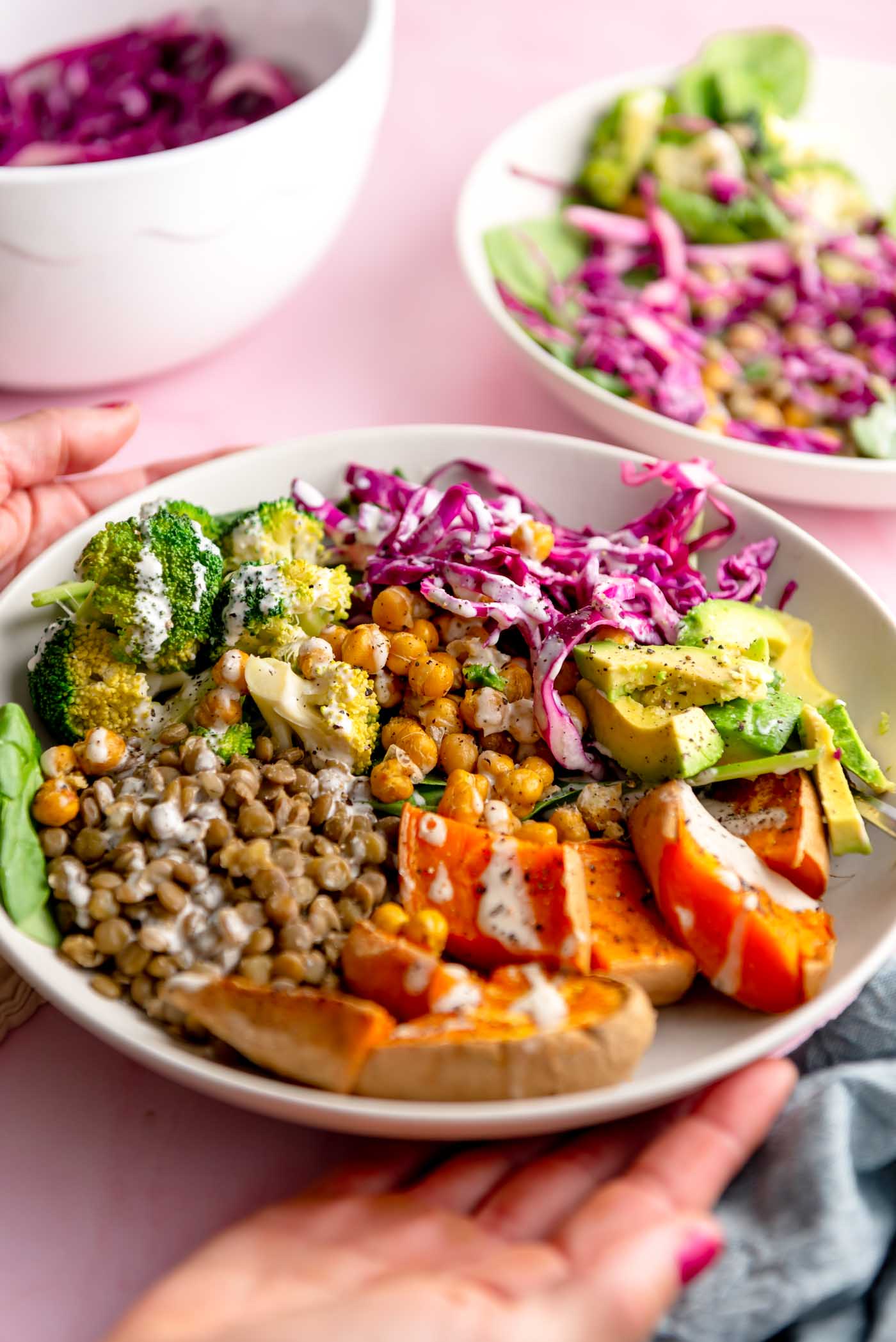
This bowl is grain-free but you can also try these Sweet Potato Tofu Bowls or Sweet Potato Black Bean Bowls for similar bowl with quinoa. These Sweetgreen Copycat Harvest Bowls and Veggie Power Bowls also feature sweet potato and are both delicious.
This hearty buddha bowl is nourishing and full of flavour. It will leave you feeling satisfied and energized and is perfect for plant-based eaters, vegans, or anyone looking to incorporate more plant-based foods into their diets. It comes together quite easily and is sure to be a favourite when you’re looking for a feel-good meal.
Recipe Highlights
- Vegan and gluten-free.
- High in fiber.
- High in protein.
- Easy to customize.
- Good for meal prep.
Ingredient Notes
- Sweet Potato: You can use sweet potato, yam or Japanese sweet potato – they’re all delicious!
- Chickpeas: I added crispy roasted chickpeas but these can be omitted or swapped for black beans or edamame.
- Lentils: You can use brown lentils, green lentils or French lentils. Cooking times will vary slightly! You can swap the lentils for a whole grain like quinoa or brown rice for a variation on these bowls – or do both!
- Broccoli: You can use broccoli or swap for cauliflower, carrot, zucchini or any other veggie you enjoy. Cauliflower and zucchini could be steamed or roasted. Carrot could be added raw and grated.
- Cabbage: Purple cabbage or green cabbage both work.
- Spinach: Use fresh baby spinach or swap for another green like mixed salad greens or kale.
- Tahini Sauce: Use the simple lemon tahini sauce or try this Cilantro Tahini Dressing, Miso Tahini Dressing or Maple Dijon Dressing.
This list is not complete. Please see the recipe card at the end of the post for the complete ingredient list with measurements and detailed instructions.
Recipe Variations
- You can swap the lentils for any cooked grain like quinoa, farro or brown rice or add up to 1/2 cup cooked grain per bowl.
- For a different texture, you can make roasted broccoli instead of steamed broccoli. Follow the roasted broccoli portion of this Miso Roasted Broccoli Salad. This will result in crispy broccoli instead of the softer texture of steamed.
- Substitute butternut squash or any other winter squash for the sweet potato.
- For more creamy texture, add 2-3 tbsp hummus per bowl. You can use store-bought hummus or make the easy hummus from this Mediterranean Hummus Bowl.
- Add Quick Pickled Red Onions.
- Add a sprinkle of nuts or seeds like chopped almonds, pecans, hemp seeds, pumpkin seeds or sunflower seeds. These can be added in addition to the chickpeas or instead of chickpeas.
Step-by-Step Instructions
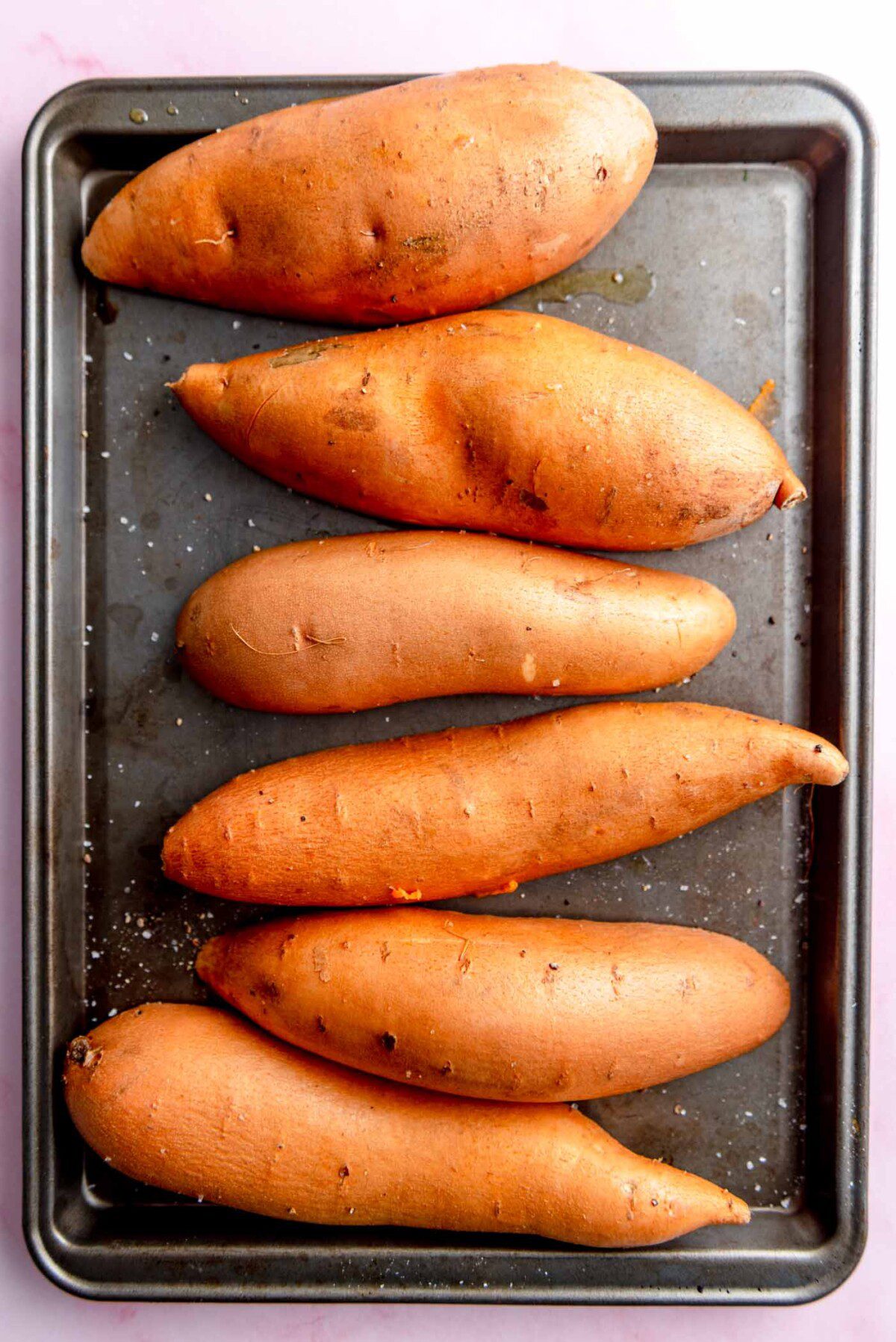
Step 1: Cut the sweet potatoes in half lengthwise. Drizzle with 1 tsp oil and rub over the flesh of each half. Season with salt and pepper. Roast at 400F cut side down until they’re tender and easily pierced with a fork.
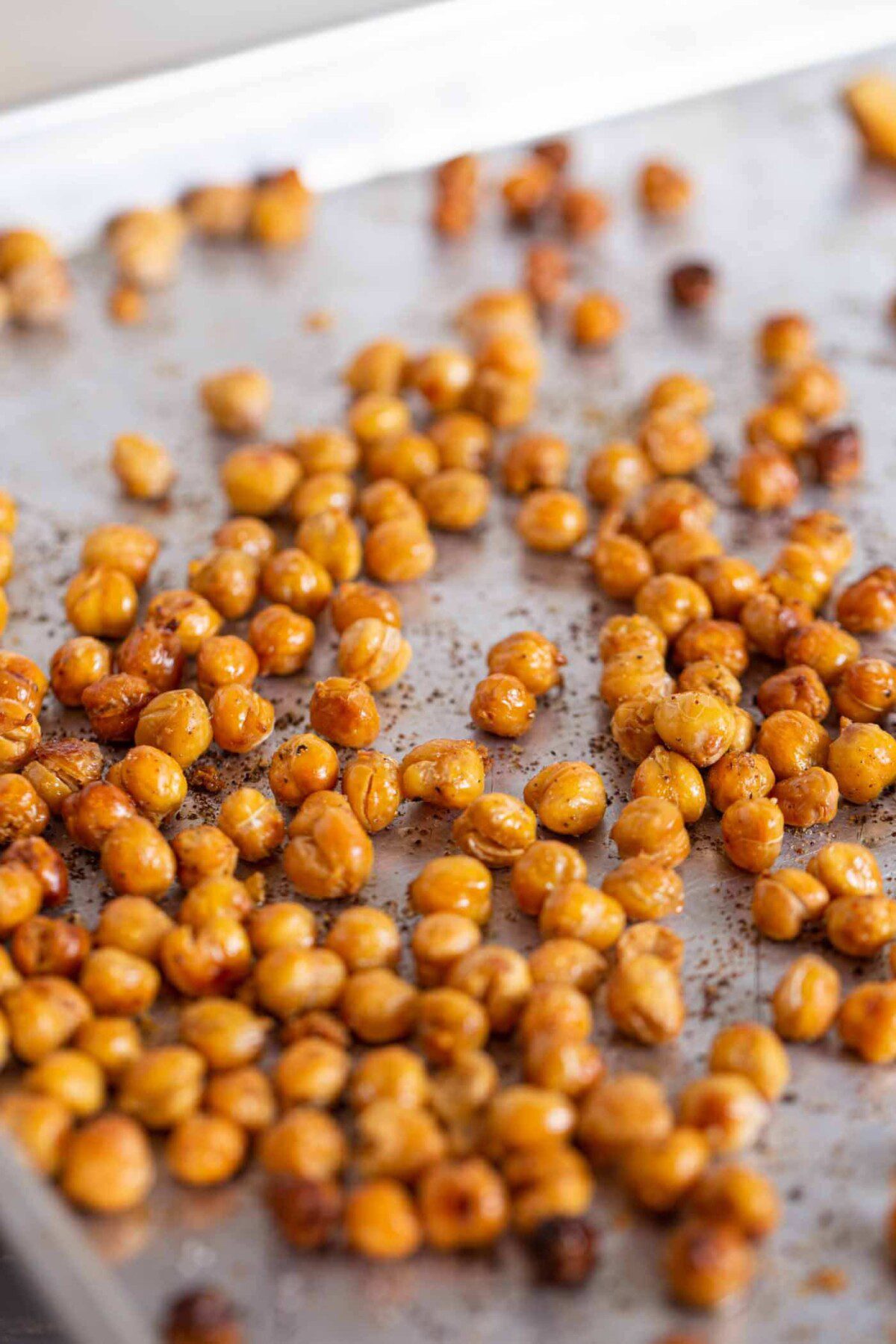
Step 2: Drain and rinse the chickpeas and blot with a dish cloth to dry. Add to a pan with 1 tsp olive oil, salt and pepper and add to the oven with the sweet potatoes. Roast about 20-25 minutes.
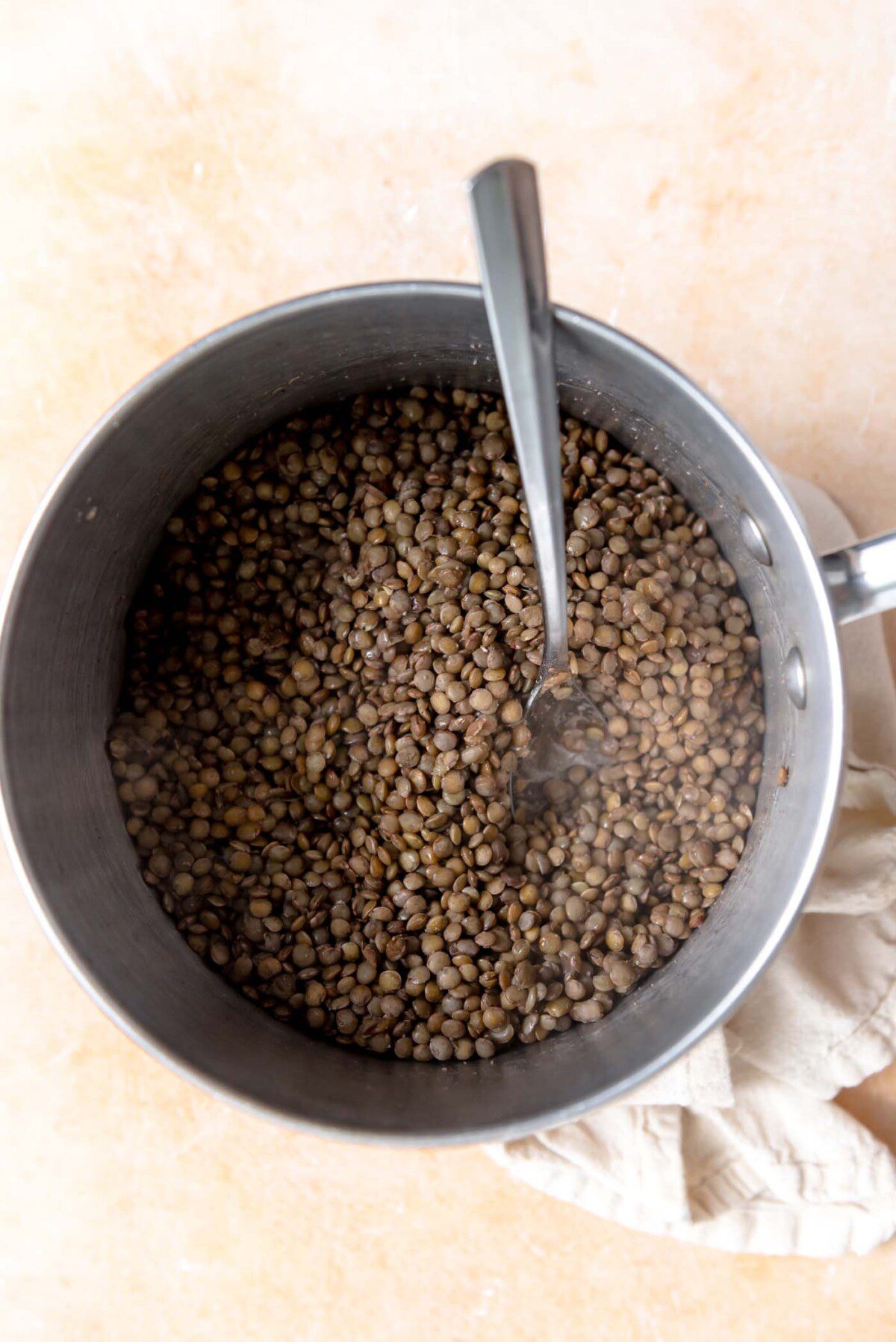
Step 3: Add the lentils to a medium saucepan with 3 cups water. Bring to a boil, cover and reduce to a simmer. Cook for 17-22 minutes until tender but not mushy. Strain off any excess water.
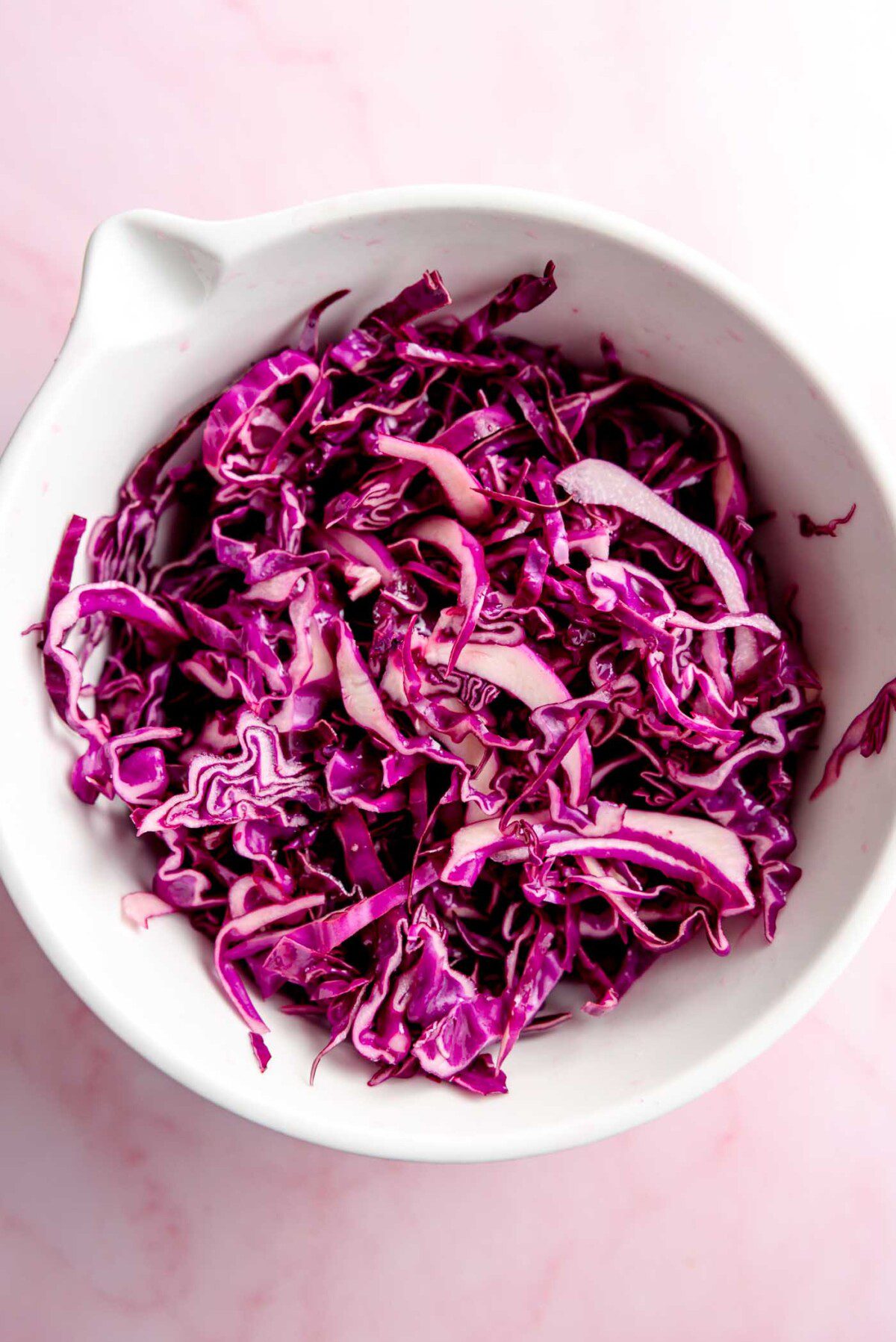
Step 4: Thinly slice the red cabbage and add to a large bowl. Add 2 tbsp vinegar and a pinch of salt and sugar. Massage briefly with your hands to mix. Set aside.
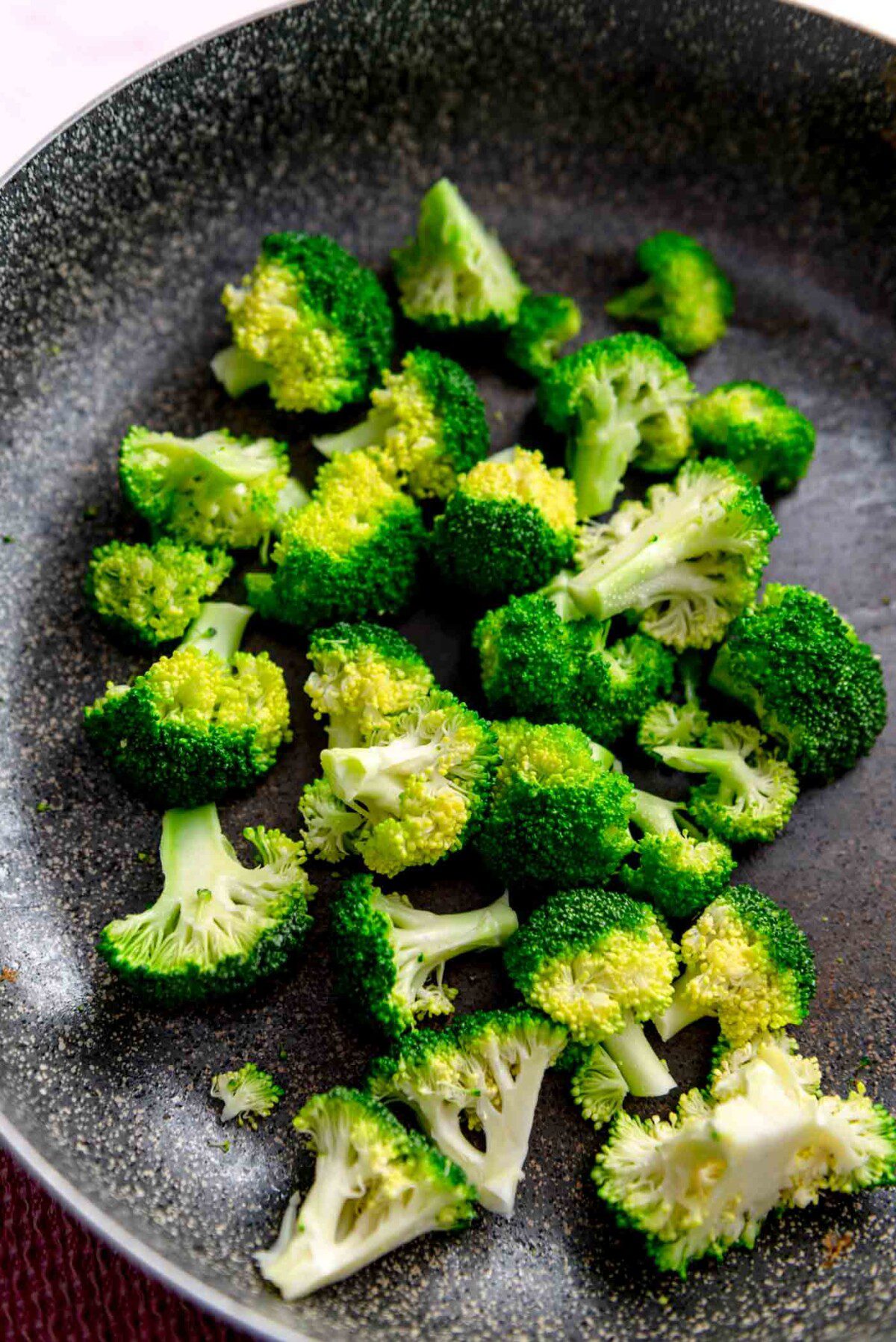
Step 4: Steam the broccoli until cooked al dente, about 4 minutes. You can do this in a steamed or just in a covered pan with a little water.
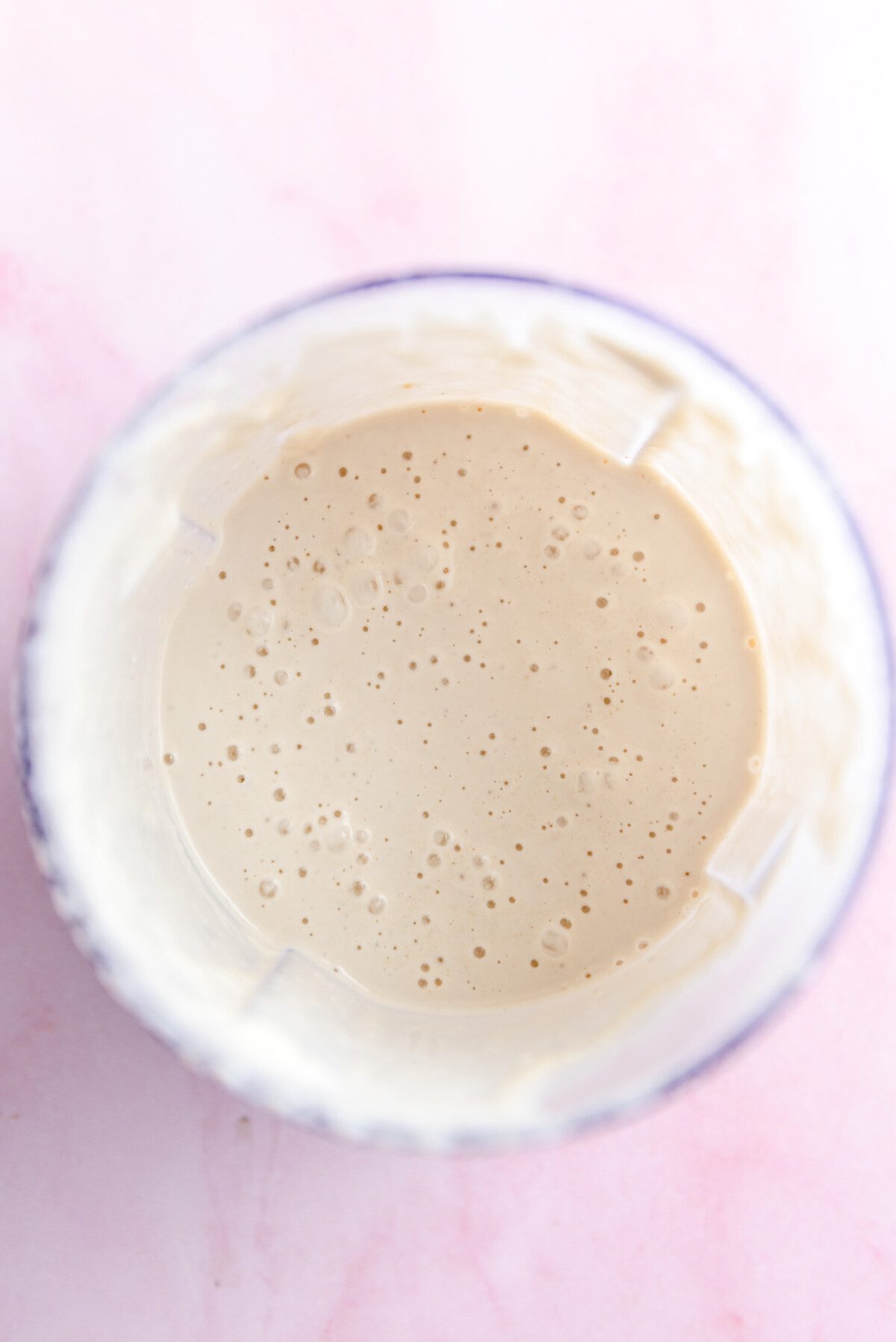
Step 6: Add all the tahini sauce ingredients to a small blender or mini food processor and mix until smooth. If you don’t have a mini blender, mix in any bowl or container, substituting garlic powder for a clove of garlic.
Step 7: Once the sweet potato is cooked, cut the halves into chunks. Assemble the bowls, starting with a handful of spinach then dividing the broccoli, sweet potato chunks, lentils (about 1/2 cup per bowl), cabbage and chickpeas between each. Top with avocado and tahini sauce.
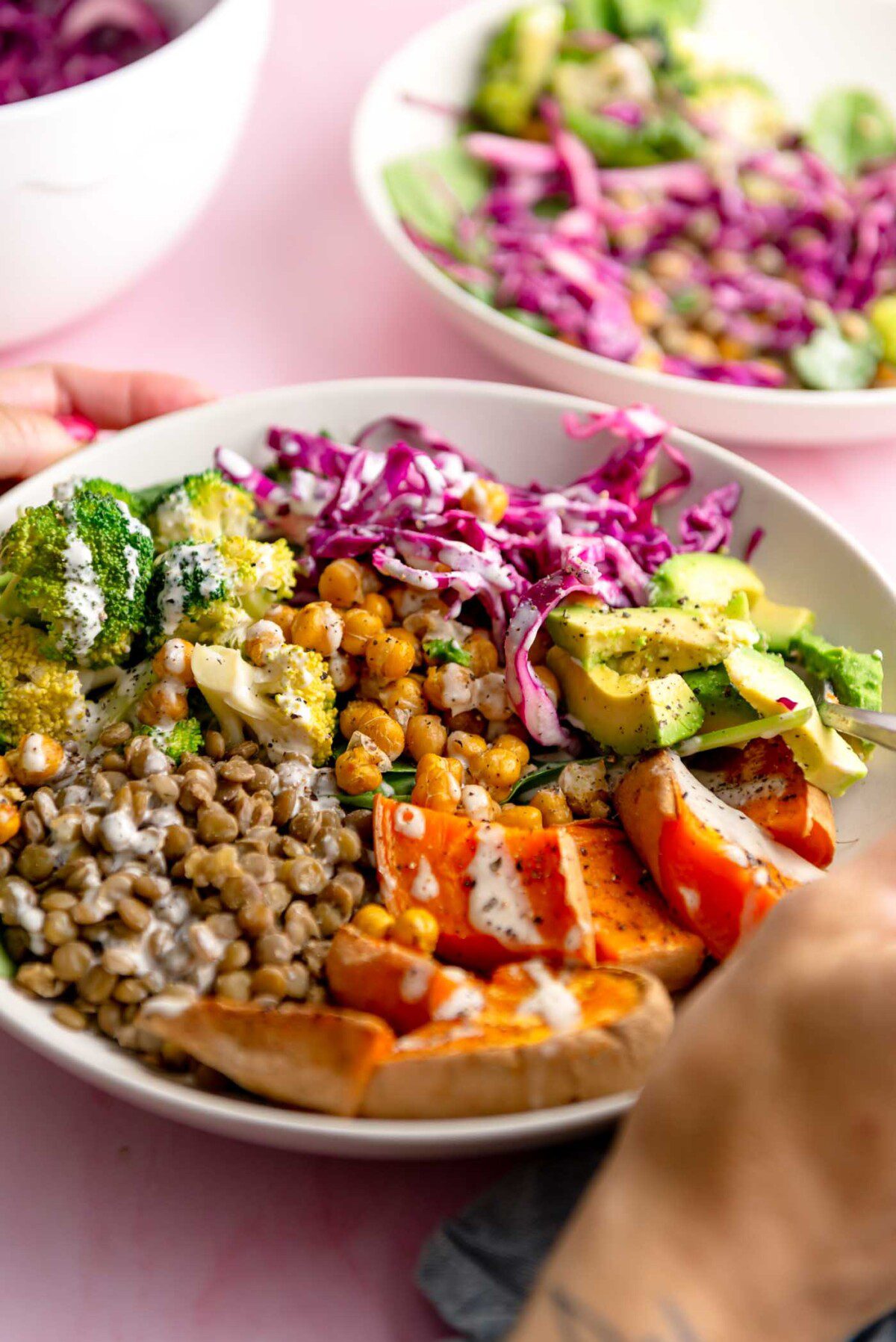
Recipe FAQs
Yes. You can make these for meal prep if you leave the avocado until serving. I also recommend leaving the dressing off until serving. The dressing will thicken when chilled, so you may need to stir in some water to thin before using again. Store the bowls for 2-3 days in an airtight container in the fridge.
The chickpeas won’t be as crunchy after storing but will still taste good. You could store them separately at room temperature to retain their crisp, just make sure they’re completely cooled before storing.
You can eat the bowls cold or microwave briefly to warm.
Pin this now to find it later
Pin It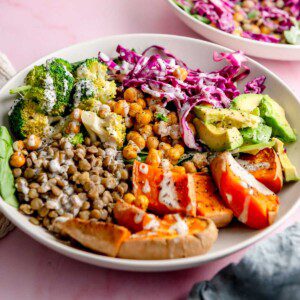
Sweet Potato Buddha Bowl
Ingredients
For the Bowls
- 3 medium sweet potatoes, halved lengthwise
- 15 oz can chickpeas
- 2 tsp olive oil, divided
- salt and pepper
- 1 cup brown lentils
- 2 cups chopped broccoli
- 1/2 small red cabbage, thinly sliced
- 2 tbsp white vinegar, red wine vinegar or apple cider vinegar
- 1 tsp cane sugar
- 1/2 tsp salt
- 1 avocado
For the Lemon Tahini Sauce
- 5 tbsp tahini
- 3 tbsp lemon juice
- 3 tbsp water, or more as needed to adjust thickness
- 1 tbsp maple syrup
- 1 clove garlic or 1 tsp garlic powder if not blending
- salt and pepper
Instructions
- Preheat the oven to 400F.
- Cut the sweet potatoes in half lengthwise and place on a baking sheet. Drizzle with 1 tsp of the olive oil and rub over the flesh and season with salt and pepper. Flip them so the cut side is facing down. Roast until tender, caramelized around the edges and easily pierced with a fork, about 25-30 minutes depending on size. Once cooked, cut into chunks.
- Drain and rinse the chickpeas and blot with a dish cloth to dry. Place on a second baking sheet, add the other 1 tsp oil and season with salt and pepper. Shake the pan to coat then add to oven. Roast 25-30 minutes until browned and crisp.
- Add the lentils to a medium saucepan with 3 cups of water. Bring to a boil, cover, reduce the heat and cook for 17-22 minutes until tender but not mushy. Strain off any excess water.
- Add the thinly sliced red cabbage to a large bowl with the vinegar, salt and sugar. Massage briefly with your hands to soften. Set aside.
- Steam the broccoli for 4-5 minutes until cooked al dente. It should be tender but still bright green, avoid overcooking.
- Add all the tahini sauce ingredients to a small blender or mini food processor. Blend until very smooth. Season with salt and pepper. Assess the thickness and add more water as needed to adjust the consistency. If you're not using a blender, use 1 tsp garlic powder instead of whole garlic and whisk together in any bowl or container.
- Assemble the bowls starting with a handful of spinach in each. Divide the cooked lentils, broccoli, sweet potato chunks, cabbage and chickpeas between each bowl. Top with lemon tahini sauce and 1/4 of the avocado.
Video
Notes
Nutrition
Originally published August 6, 2018.
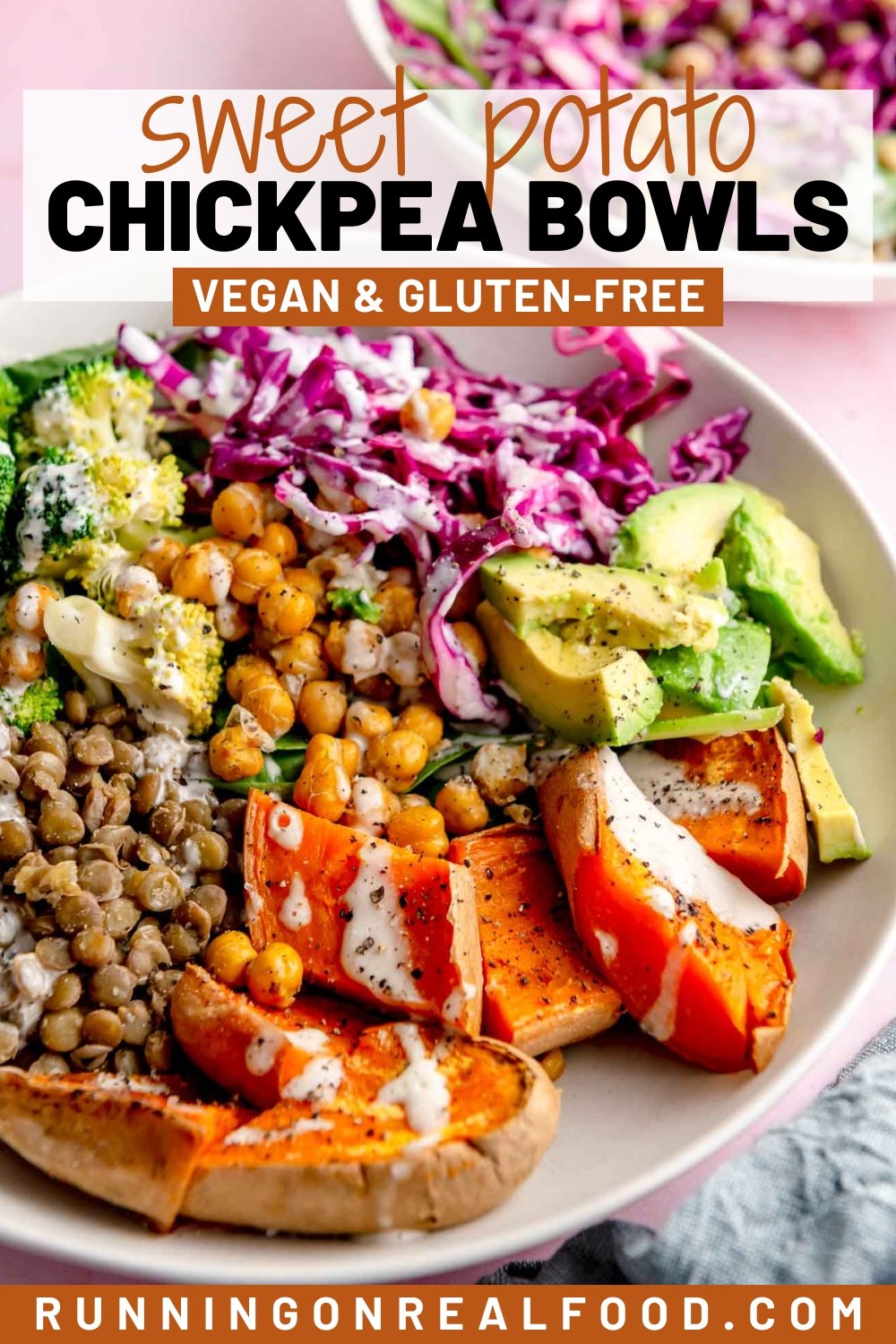
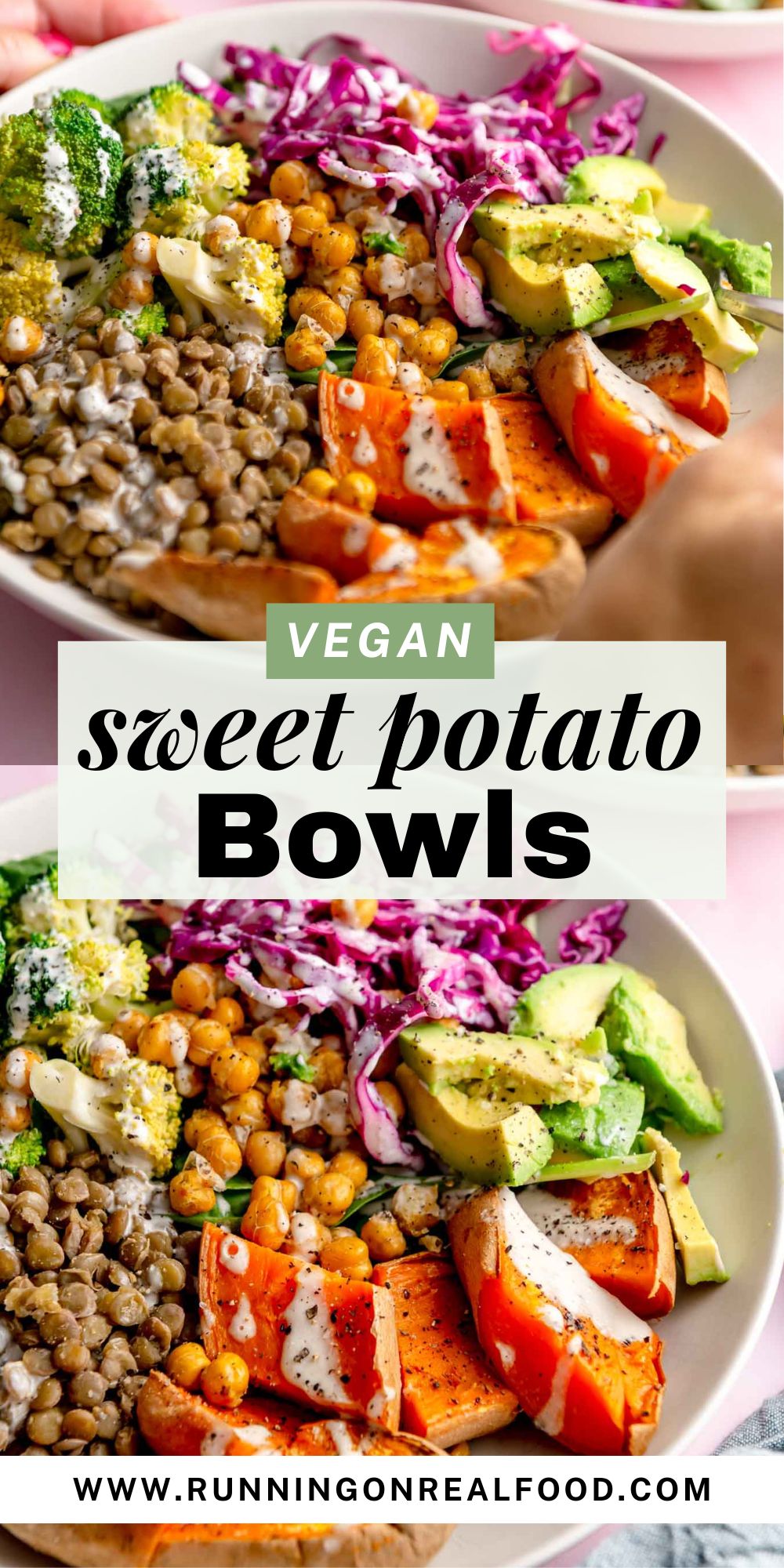
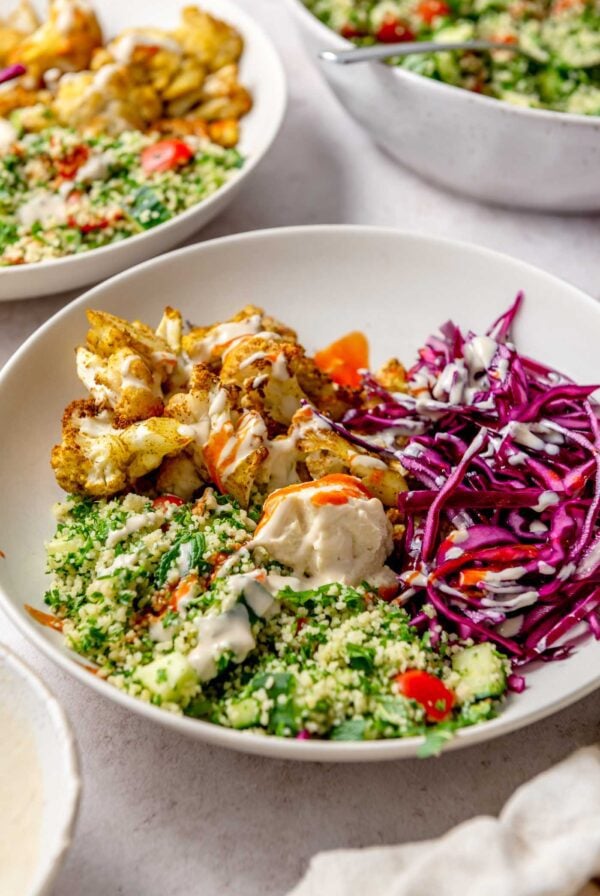
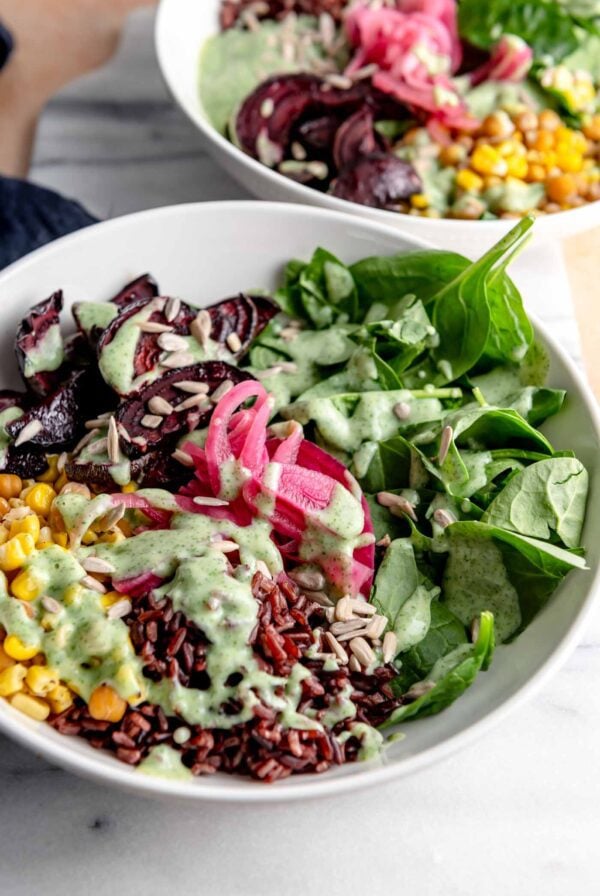
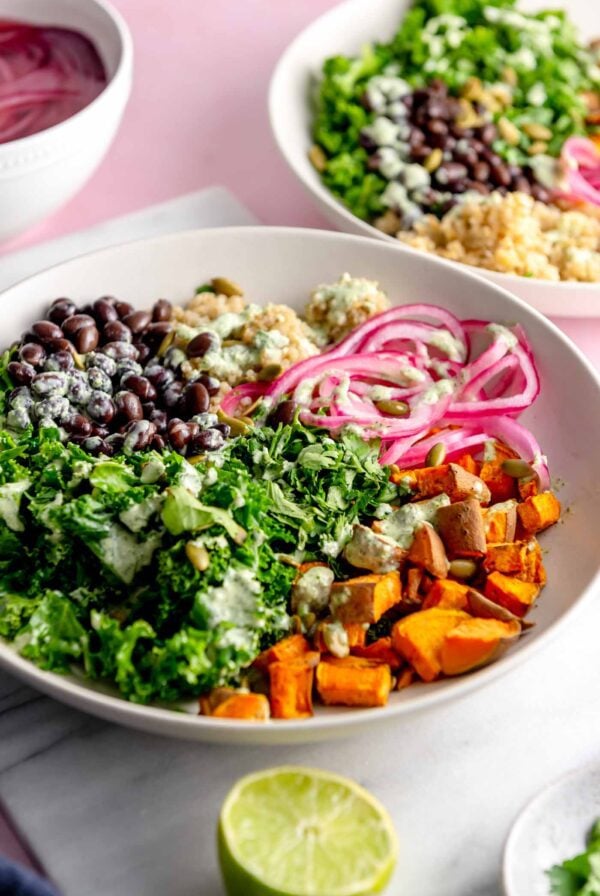
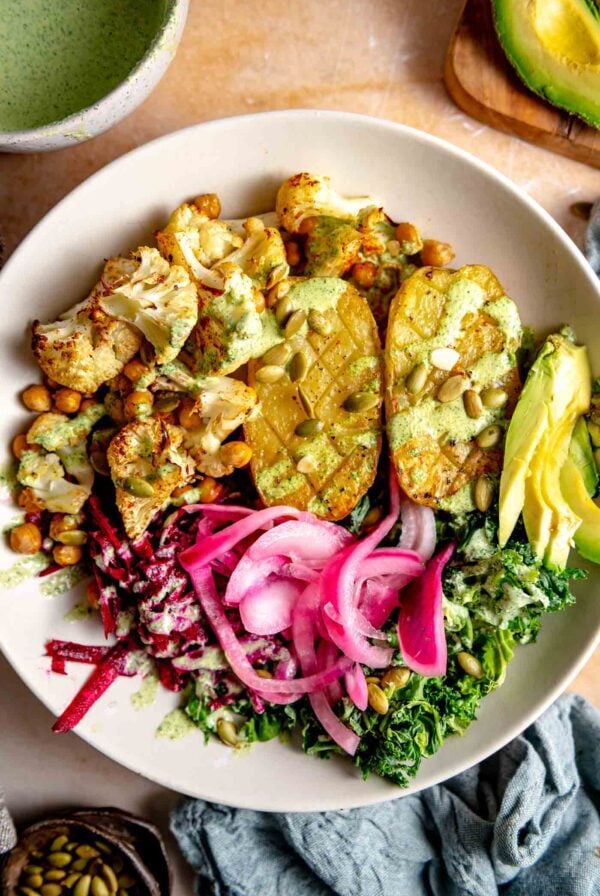








My husband said this one was a home run. I agree. I added the baked tempeh from the tempeh Buddha bowl. The cabbage was definitely key. The crunch and acid balanced out the dense creaminess of the tempeh and sauce. Will definitely make this again.
So quick and yummy!
Just wanted to pop in to say I love this recipe (my very first Buddha bowl!). It’s so quick to prepare and so filling! I’m going to explore the rest of your awesome site!
Yummy! I’ve really been into bowls lately and this one is perfect! My brother brought me a few butternut squashes from his garden! P.S. I couldn’t rate this recipe for some reason.
I’ve been looking for healthy dinners lately and this one sounds delicious. Thank you!!!
YESSS I love Buddha bowls! What a hearty combo of black beans, quinoa and butternut squash! And that tahini lime dressing – so tasty!!
My kind of dinner! We make buddha bowls at least twice a week. They are a great way to use up odds and ends. Love the apple addition in this one. I’ve never done that and I can imagine the sweetness and crisp texture are lovely with the other ingredients.